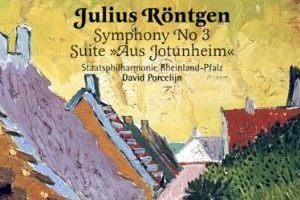Until now.
The Leipzig-born, Amsterdam-resident composer Julius Röntgen (1885-1932) has been resurrected, and any lover or former lover of Brahms and Dvořák — or Grieg and touches of Tchaikovsky, for that matter — can wallow in new tunes and first-class symphonic treatments in an amalgamated style of these greats. Which brings up a serious issue: How important is originality in defining great music? Röntgen is a case in point to the contrary.
Listen to the Music
Does it matter that he wrote his Symphony No. 3 in 1910 when it sounds like something that Dvořák or Brahms could have written in 1885? Not if it's this good. Listen to the rousing theme to the first movement and see if you agree. Or listen to the mysterious, Bach-ish theme to the second. Finally, there's the fine suite of tunes inspired by a visit the composer made to Norway to visit his good friend Edvard Grieg. (Brahms, by the way, was another friend; Röntgen, no slouch on the piano, played Brahms' Second concerto in concert for him in Amsterdam in 1887.) Check out this nice opening number to the suite.
Conductor David Procelijn does a fine job with the interpretations; his orchestra is adequate to the challenges of the music, though not major league, and the sonics are more than acceptable. If you like late-Romantic melody, with less of the histrionics of Mahler or Strauss, Röntgen will prove to be an amazing discovery. The dusty archives of his manuscripts are just beginning to be opened up. I have listened to several recent CDs of his music; not a one of them has disappointed. Consider writing a late valentine to yourself by giving the gentleman a hearing.

